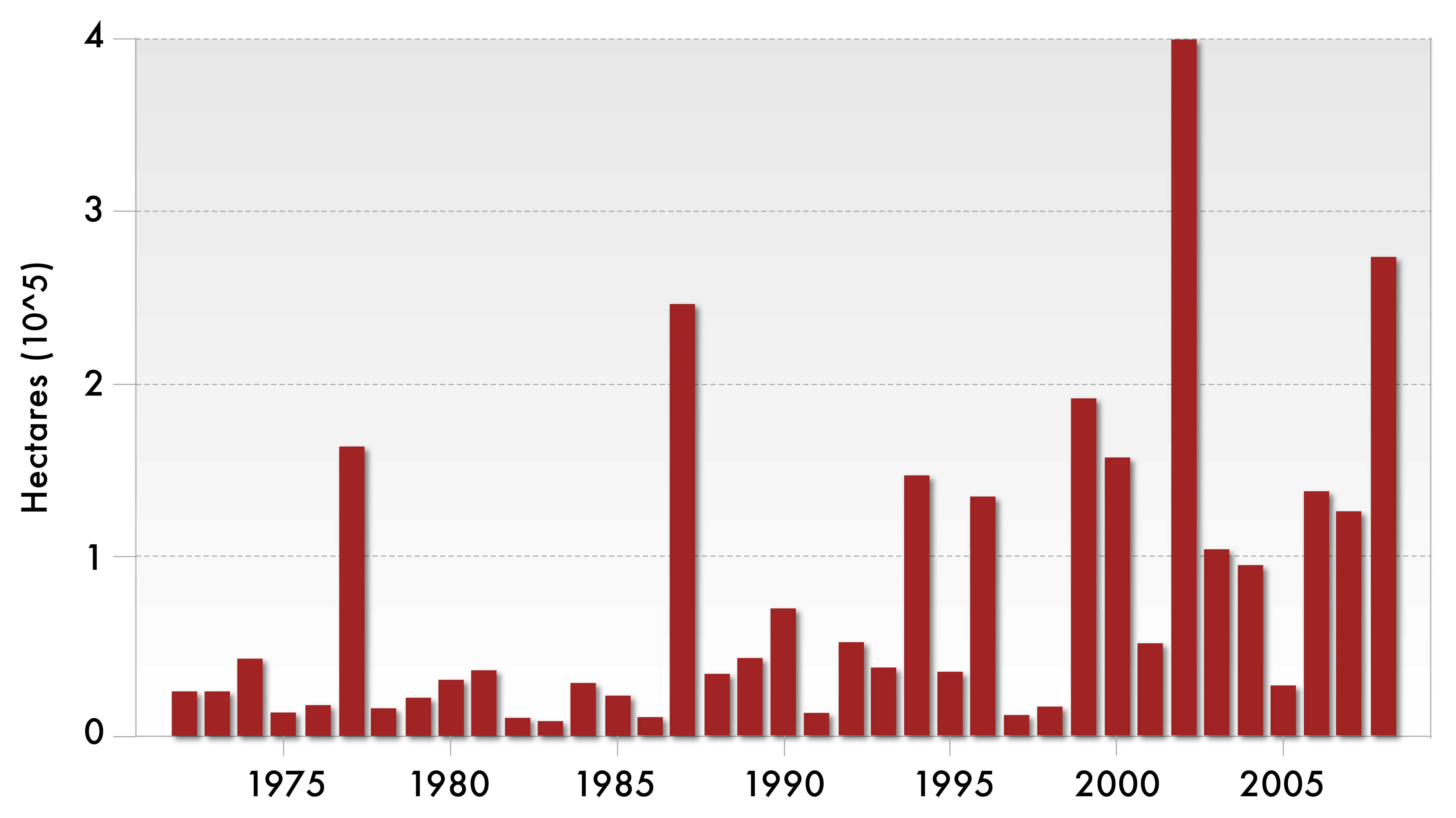Fire, Heat, Pests, Among Expected Ecosystem Threats
In our last blog, Gregg Garfin introduced the Assessment of Climate Change in the Southwest United States. This week, we focus on the ecosystems chapter (Chapter 8: Natural Ecosystems) where Coordinating Lead Author Erica Fleishman from University of California, Davis and a dozen other authors describe observed changes in geographic distributions and phenology (timing of life cycle events such as blooming and migrations) in southwestern ecosystems. They also examine disturbances affecting ecosystems such as wildfires and outbreaks of forest pathogens.
Key findings from the chapter include:
- Observed changes in climate are associated strongly with some changes in geographic distributions of species and some observed changes in phenology. For example, bud formation and flowering is occurring 1.5 days earlier per decade in western North America with increases in winter and spring temperatures, and for over a decade climate change has been shifting the first springtime appearance of American robins and egg-laying by Mexican jays to earlier in the year.
-
Wildfires and outbreaks of forest pests and pathogens are associated strongly with observed changes in climate, particularly higher temperatures and lower precipitation.
- Between 1997 and 2008, over 12% of southwestern forests died from bark beetles, and as of 2010, “bark beetles were estimated to have affected more than twice the forest area burned by wildfires in Arizona and New Mexico in recent decades.”

- The area of southwestern forests burned from 1987 to 2003 was more than 300% relative to the area burned during the 1970s and early 1980s (see figure to the right; Figure 8.2 from Assessment of Climate Change in the Southwest United States). “The National Research Council projected that if temperature increases by 1.8°F (1°C), there will be a 312% increase in area burned in the Sierra Nevada, southern Cascades, and coast ranges of California; a 380% increase in the mountains of Arizona and New Mexico; a 470% increase on the Colorado Plateau; and a 656% increase in the southern Rocky Mountains.
-
Responses to climate change will vary by species, both native and non-native. There’s no clear evidence that non-native species will reproduce or survive any better than native species in the future. However, if climate changes do increase the probability of non-native species survival, then their high dispersal rates, rapid growth, high reproductive capacity, and “ability to adapt to short-term environmental variability may increase the probability they will become established and persist, in some cases quite rapidly.”
I talked with Fleishman to get her take on some topics not included in the chapter:
What do you consider to be the most important impacts to the SW region, and how might they affect the average citizen?
Fleishman: I think decreases in availability of water are among the climatic changes most likely to affect ecosystems and society in the Southwest. Regulations on agricultural, industrial, and domestic water use may increase, which could affect prices of many commodities and amenities. Additionally, probability of fire and associated loss of life and property may increase as vegetation becomes drier and more flammable.
What is the biggest barrier for dealing with these impacts?
Fleishman: In my personal opinion, the greatest barrier is current lack of political will, societal will, and financial incentives for all sectors to use water more efficiently.
What do you view as the most surprising or significant NEW result from your chapter since the 2009 National Climate Assessment?
Fleishman: Estimates of changes in the location, frequency, and sizes of fires have become more robust, and understanding of interactions between different causes of vegetation change and probability of fire has increased substantially. This information may contribute to decisions about management of fire in wildlands and at the urban-wildland interface.
What are you most interested in learning more about next?
Fleishman: I am interested in learning more about the extent to which information on climate and climate change is likely to support decision-making in the Southwest, and then to use my knowledge and skills to help provide or interpret that information.
Next week I’ll discuss how climate change is impacting human health, and we’ll hear from Coordinating Lead Author Heidi Brown from the University of Arizona.
*For more information on the Assessment of Climate Change in the Southwest United States, including a full-color pdf of the book, how to order a hard copy, and two-page fact sheets of each chapter, see www.swcarr.arizona.edu.

